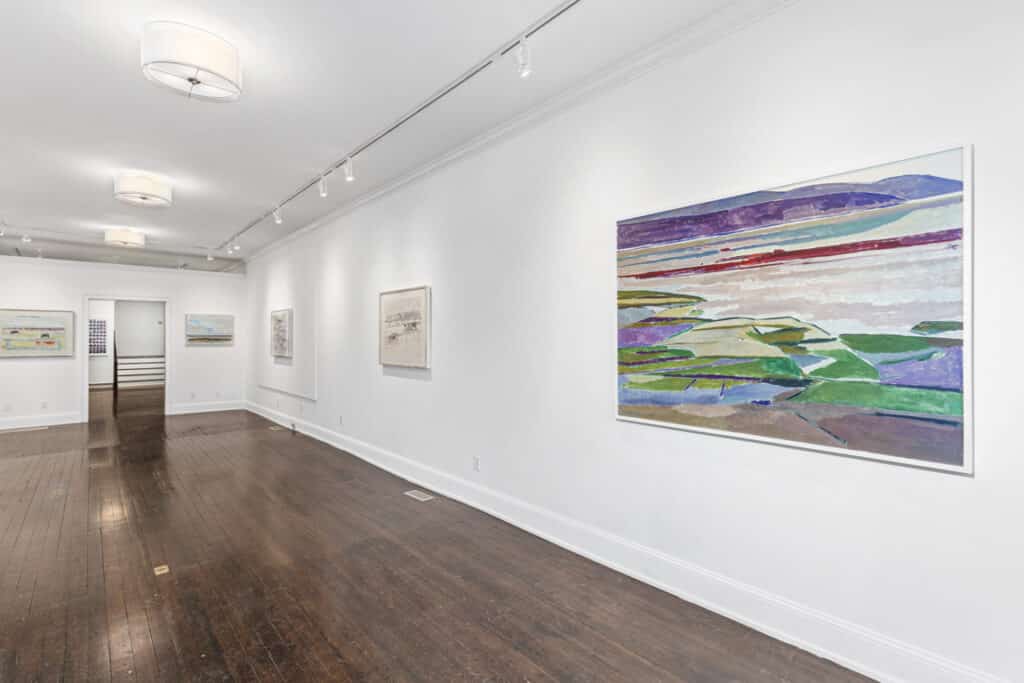Reeve Schley, By the River

The artist returns to the Church Rocks in St. Lawrence from Pointe-au-Pic (1998), using these landmarks as gestural, almost calligraphic, markers of time of day and weather. We can see the familiarity of a local, for whom the rocks are a means of locating themselves in their emotional milieu as well as geographically. They are brushed in a hazy shorthand that speaks directly to a sense of comfort in a known place. Mountains in Schley’s visual glossary are not intimidating landscape features but are analogous to the rocks as markers of season, time, and temperature. In Mustard Field (1998) the band of mountain between the field of bright yellow and cerulean blue sky offers a dark counterpoint to the flowers in blossom. While the field is almost blinding in its burst of life, the multitude of browns and dark greens in the mountains signify that spring is still a ways off. In Red Tail Hawk at the Farm (1992) the artist playfully incorporates the raptor into the landscape, curling the wing of the coasting bird around the farm buildings creating a formal ambiguity between the central figure of the bird, the bales of hay in the foreground, and the distant blue-tinted mountains.
Coloristic ambiguity seems to be a favorite question which Schley considers. In his works on paper, line is given pride of place, while washes of color seem to manifest as the light strikes form. In the watercolor Picnic Patterns (2002) the only real distinction between the seated figures at top and the boulders that comprise the body of the painting are the carefree blue and green washes distinguishing the humans (and their sun hats). In the painting Boys at the Trou (1991), the shadow cast by the main figure’s chin is as important as the tones of his tanned legs or the scarlet of his swimming trunks. Quebec Studio Porch (2005) concerns itself with the nuances of green. Schley doesn’t seem to mind if the viewer isn’t sure which greens signify different species of trees, or the shadows of branches, what we do sense is the overbearing light of the dog days of summer: a light which tends to wash out colors with its brightness. We can almost hear the cicadas clicking and flies buzzing. Precision and replication of our response to the environment is the goal of these images—the color is as ephemeral and fleeting as the time of day.